#Thick Film Devices Market report
Explore tagged Tumblr posts
Text
Two-Dimensional Materials Market: Growth, Trends and Opportunities Through 2024-2031
The Two-Dimensional Materials Market is creating waves across multiple industries, from electronics and energy to healthcare and automotive. Characterized by ultra-thin structures just one atom thick, materials such as graphene, molybdenum disulfide, and hexagonal boron nitride offer exceptional electrical, thermal, and mechanical properties. These qualities have led to widespread interest and investment in the 2D Materials Market, which promises to reshape sectors dependent on lightweight, durable, and conductive materials.
According to BIS Research, the Two-Dimensional Materials Market is set to grow from $526.1 million in 2022 to $4 billion by 2031, with a CAGR of 25.3% over the forecast period.
Market Growth and Trends
Driven by breakthroughs in nanotechnology, the Two-Dimensional Materials Market is expected to expand rapidly in the coming years. Electronics and energy storage are two of the fastest-growing applications, where 2D materials enhance efficiency and sustainability. The market is further propelled by demand for flexible and miniaturized electronics, particularly in the semiconductor and photovoltaic industries, making these materials an attractive choice for next-generation applications.
Request a Free Sample Report on the Two-Dimensional Materials Market
Key Technologies Shaping the Market
Several notable 2D materials are leading the transformation in this sector:
· Graphene: Known for its incredible strength and conductivity, graphene is ideal for high-performance sensors, batteries, and flexible electronic devices.
· Molybdenum Disulfide (MoS₂): Frequently used in transistors and photodetectors, MoS₂ is popular for its stability and flexibility in nanoelectronics.
· Hexagonal Boron Nitride: This material acts as an excellent insulator and is widely used in high-performance thermal management systems.
Demand Drivers
Key drivers shaping the Two-Dimensional Materials Market include:
· Rising Demand for Miniaturized Electronics: As industries shift towards compact and lightweight electronic devices, 2D materials offer a sustainable solution without compromising performance.
· Sustainability Goals in Energy: The demand for energy-efficient materials in solar cells, fuel cells, and batteries fuels the growth of 2D materials.
· Medical and Biotechnology Applications: With exceptional biocompatibility and electrical conductivity, 2D materials support the development of advanced medical devices and sensors. Download Complete TOC of the Two-Dimensional Materials Market Report
On-Field to Lead the Two-Dimensional Materials Market
On-field applications of 2D materials are expected to lead the market, especially in sectors like flexible electronics and wearable technologies, where adaptability and durability are critical. These materials’ unique attributes facilitate the development of cutting-edge products, from transparent conductive films to biocompatible implants, opening avenues for real-world, on-field applications across industries.
Key Players
Company Type 1 (by Material Type): Graphene
· NanoXplore Inc.
· Cabot Corporation
And many others
Company Type 2 (by Material Type): Black Phosphorus
Smart-elements GmbH
Ossila Ltd.
Company Type 3 (by Material Type): Mxene
· Ossila Ltd.
· ACS Material LLC
And many others
Company Type 4 (by Material Type): TMDCs
Ossila Ltd
6 Carbon Technology
PlanarTECH LLC
And many others
Get More Market Insights on Advanced-materials-chemicals
Conclusion
The Two-Dimensional Materials Market is on an upward trajectory as demand for advanced materials grows across diverse applications. With their superior physical properties and versatility, 2D materials are set to redefine the future of electronics, energy storage, and biomedical applications. BIS Research, recognized as a best market research company, provides premium market intelligence reports on deep technologies poised to cause significant market disruption in the coming years.
At BIS Research, we focus exclusively on technologies related to precision medicine, medical devices, diagnostics, life sciences, artificial intelligence (AI), machine learning (ML), Internet of Things (IoT), big data analysis, blockchain technology, 3D printing, advanced materials and chemicals, agriculture and FoodTech, mobility, robotics and UAVs, and aerospace and defense, among others
0 notes
Text
Thick Film Heater (TFH) Market Global Industry Analysis, Trends 2024 - 2032

The Reports and Insights, a leading market research company, has recently releases report titled “Thick Film Heater (TFH) Market: Global Industry Trends, Share, Size, Growth, Opportunity and Forecast 2024-2032.” The study provides a detailed analysis of the industry, including the global Thick Film Heater (TFH) Market Trends share, size, and growth forecasts. The report also includes competitor and regional analysis and highlights the latest advancements in the market.
Report Highlights:
How big is the Thick Film Heater (TFH) Market?
The global Thick Film Heater (TFH) market size reached US$ 1.1 Billion in 2023, and according to Reports and Insights, will reach US$ 1.8 Billion by 2032, and register a growth rate (CAGR) of 5.5% during 2024-2032.
What are Thick Film Heater (TFH)?
A Thick Film Heater (TFH) is a heating element created using thick film technology, which involves screen-printing a resistive heating layer onto a substrate like ceramic or stainless steel. TFHs are valued for their small size, rapid response times, and energy efficiency. They find application in automotive, medical devices, and consumer electronics for heating liquids, gases, and surfaces. TFHs offer benefits such as even heating, accurate temperature regulation, and suitability for various voltages and power levels, making them versatile heating solutions across industries.
Request for a sample copy with detail analysis: https://www.reportsandinsights.com/sample-request/2208
What are the growth prospects and trends in the Thick Film Heater (TFH) industry?
The thick film heater (TFH) market growth is driven by various factors. The TFH market is experiencing consistent growth, fueled by the rising need for compact and energy-efficient heating solutions across diverse industries. TFHs, renowned for their quick response times and precise temperature control, find extensive usage in automotive, medical devices, and consumer electronics sectors. Market expansion is driven by advancements in thick film technology, heightened emphasis on energy conservation, and the expanding automotive and electronics industries. Moreover, the adaptability of TFHs, ensuring uniform heating and suitability for varying voltages and power levels, continues to drive their adoption and market expansion. Hence all these factors contribute to thick film heater (TFH) market growth.
What is included in market segmentation?
The report has segmented the market into the following categories:
North America
United States
Canada
Europe
Germany
United Kingdom
France
Italy
Spain
Russia
Poland
Benelux
Nordic
Rest of Europe
Asia Pacific
China
Japan
India
South Korea
ASEAN
Australia New Zealand
Rest of Asia Pacific
Latin America
Brazil
Mexico
Argentina
Middle East Africa
Saudi Arabia
South Africa
United Arab Emirates
Israel
Rest of MEA
Who are the key players operating in the industry?
The report covers the major market players including:
NIBE Industrier AB
Watlow Electric Manufacturing Company
Minco Products, Inc.
Backer Electric Company
Chromalox (Spirax-Sarco Engineering)
Durex Industries
Celduc Relais
Omega Engineering, Inc.
WATTCO
Tutco-Farnam
Holroyd Components Ltd.
Heatron, Inc.
Auster Rubber Co., Inc.
HTM Sensors
Smiths Group plc (Flexelec)
View Full Report: https://www.reportsandinsights.com/report/Thick Film Heater (TFH)-market
If you require any specific information that is not covered currently within the scope of the report, we will provide the same as a part of the customization.
About Us:
Reports and Insights consistently mееt international benchmarks in the market research industry and maintain a kееn focus on providing only the highest quality of reports and analysis outlooks across markets, industries, domains, sectors, and verticals. We have bееn catering to varying market nееds and do not compromise on quality and research efforts in our objective to deliver only the very best to our clients globally.
Our offerings include comprehensive market intelligence in the form of research reports, production cost reports, feasibility studies, and consulting services. Our team, which includes experienced researchers and analysts from various industries, is dedicated to providing high-quality data and insights to our clientele, ranging from small and medium businesses to Fortune 1000 corporations.
Contact Us:
Reports and Insights Business Research Pvt. Ltd. 1820 Avenue M, Brooklyn, NY, 11230, United States Contact No: +1-(347)-748-1518 Email: [email protected] Website: https://www.reportsandinsights.com/ Follow us on LinkedIn: https://www.linkedin.com/company/report-and-insights/ Follow us on twitter: https://twitter.com/ReportsandInsi1
#Thick Film Heater (TFH) Market share#Thick Film Heater (TFH) Market size#Thick Film Heater (TFH) Market trends
0 notes
Text
Cyclodextrin Market Trends, Demand & Future Scope till 2032
Cyclodextrin Market provides in-depth analysis of the market state of Cyclodextrin manufacturers, including best facts and figures, overview, definition, SWOT analysis, expert opinions, and the most current global developments. The research also calculates market size, price, revenue, cost structure, gross margin, sales, and market share, as well as forecasts and growth rates. The report assists in determining the revenue earned by the selling of this report and technology across different application areas.
Geographically, this report is segmented into several key regions, with sales, revenue, market share and growth Rate of Cyclodextrin in these regions till the forecast period
North America
Middle East and Africa
Asia-Pacific
South America
Europe
Key Attentions of Cyclodextrin Market Report:
The report offers a comprehensive and broad perspective on the global Cyclodextrin Market.
The market statistics represented in different Cyclodextrin segments offers complete industry picture.
Market growth drivers, challenges affecting the development of Cyclodextrin are analyzed in detail.
The report will help in the analysis of major competitive market scenario, market dynamics of Cyclodextrin.
Major stakeholders, key companies Cyclodextrin, investment feasibility and new market entrants study is offered.
Development scope of Cyclodextrin in each market segment is covered in this report. The macro and micro-economic factors affecting the Cyclodextrin Market
Advancement is elaborated in this report. The upstream and downstream components of Cyclodextrin and a comprehensive value chain are explained.
Browse More Details On This Report at @https://www.globalgrowthinsights.com/market-reports/cyclodextrin-market-100564
Global Growth Insights
Web: https://www.globalgrowthinsights.com
Our Other Reports:
Blood Clot Retrieval Devices MarketMarket Growth Rate
Waste Derived Biogas MarketMarket Forecast
Global Cosmetic Lasers MarketMarket Size
Clinical Trial Patient Recruitment Services MarketMarket Growth
Geosynthetics MarketMarket Analysis
Portable Solar Charger MarketMarket Size
Global Polyolefin Elastomers (POE) MarketMarket Share
Global Wireless Gigabit MarketMarket Growth
Underwater ROV MarketMarket
Recreation Management Software MarketMarket Share
Construction Management Software MarketMarket Growth Rate
Screenless Display MarketMarket Forecast
Global Sheep Milk Soap MarketMarket Size
Healthcare Education Learning Management System MarketMarket Growth
Gastroenterology MarketMarket Analysis
Alf3 (Aluminium Fluoride) MarketMarket Size
Global Tamping Machine MarketMarket Share
Global Fixed Wing Unmanned Aerial Vehicles MarketMarket Growth
In-wheel Motors MarketMarket
Indoor Location-based Services (LBS) MarketMarket Share
Pvc Cling Film MarketMarket Growth Rate
Membrane Distillation MarketMarket Forecast
Global Defatted Wheat Germ Powder MarketMarket Size
Sequins Apparels MarketMarket Growth
Gene Sequencing MarketMarket Analysis
CNC Video Measuring MarketMarket Size
Global Hospital Commode MarketMarket Share
Global Fireproofing Material MarketMarket Growth
Microplate Reader MarketMarket
Sulfonated Melamine Formaldehyde Condensate MarketMarket Share
Comic Book MarketMarket Growth Rate
Patient Engagement Software MarketMarket Forecast
Global Ultralight and Light Aircraft MarketMarket Size
Neuropathy Screening Devices MarketMarket Growth
Panoramic Camera APP MarketMarket Analysis
Automatic Capacitor Winding Machine MarketMarket Size
Global Fin Seal Overwrapping Machine MarketMarket Share
Global Mine Escape Rescue Capsule MarketMarket Growth
Beating Heart Surgery Stabilizer MarketMarket
Ultrasonic Thickness Coating Gauge MarketMarket Share
0 notes
Text
The Science Behind Vapes: How They Work
These components could be altered to create different vaping experiences, from powerful throat strikes to thick, healthy clouds. The charm of vaping runs beyond the simple act of breathing vapor. It's fostered a lively tradition, with areas creating around discussed interests in vape technology, e-liquid types, and cloud chasing—the exercise of making big vapor clouds. On line forums, social media marketing organizations, and vape shops have grown to be gathering places for fanatics to alien labs methods, display custom forms, and discuss the latest styles and innovations.
Health implications have already been key to the discussion bordering vaping. While vaping is typically considered less hazardous than smoking conventional cigarettes, it's maybe not without risks. Study suggests that while e-cigarettes remove several harmful ingredients within tobacco smoke, they still include nicotine, that is addictive and can have negative health effects. Moreover, the long-term influence of breathing vaporized elements remains a topic of constant study and discussion within the medical community.
Vaping has also had a large affect smoking cessation efforts. Many smokers have looked to vaping as a means to stop smoking, finding it a fruitful way to lessen their nicotine intake gradually. Vape items present different nicotine skills, enabling users to wean themselves down nicotine over time. Community health companies, however, remain divided on endorsing vaping as a smoking cessation software, mentioning the requirement for more comprehensive reports on their usefulness and safety.
The regulatory landscape for vaping is complex and differs considerably across different regions. In certain nations, stringent rules govern the sale and advertising of vape services and products, including age limitations, marketing bans, and protection requirements for devices and e-liquids. Different parts have adopted more lenient approaches, focusing on harm decrease and seeing vaping as a practical alternative to smoking.
That patchwork of regulations reflects the constant question over how better to stability community wellness concerns with particular flexibility and customer choice. Vaping's effect on popular lifestyle cannot be overstated. It's permeated music, style, and also film, with celebrities and influencers frequently observed vaping in public and on social media. This awareness has contributed to the normalization of vaping, specially among young demographics.
0 notes
Text
Global Top 5 Companies Accounted for 77% of total Ellipsometer market (QYResearch, 2021)
An ellipsometer enables to measure the refractive index and the thickness of semi-transparent thin films. The instrument relies on the fact that the reflection at a dielectric interface depends on the polarization of the light while the transmission of light through a transparent layer changes the phase of the incoming wave depending on the refractive index of the material. An ellipsometer can be used to measure layers as thin as 1 nm up to layers which are several microns thick. Applications include the accurate thickness measurement of thin films, the identification of materials and thin layers and the characterization of surfaces.
This report studies the ellipsometer market, by type (laser ellipsometer, spectroscopic ellipsometer, and imaging ellipsometers).
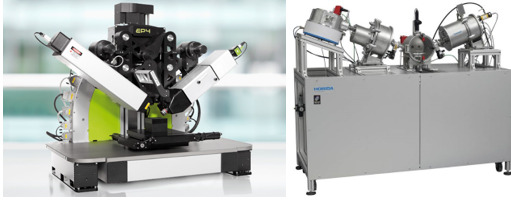
According to the new market research report “Global Ellipsometer Market Report 2023-2029”, published by QYResearch, the global Ellipsometer market size is projected to reach USD 0.05 billion by 2029, at a CAGR of 2.6% during the forecast period.
Figure. Global Ellipsometer Market Size (US$ Million), 2018-2029

Figure. Global Ellipsometer Top 5 Players Ranking and Market Share(Based on data of 2021, Continually updated)
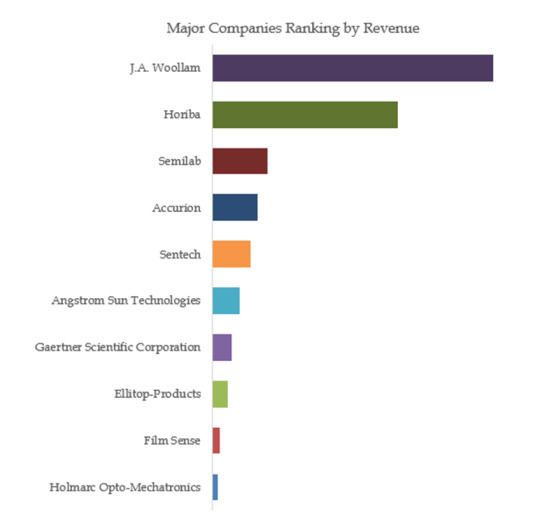
The global key manufacturers of Ellipsometer include J.A. Woollam, Horiba, Semilab, Accurion, Sentech, Angstrom Sun Technologies, Gaertner Scientific Corporation, Ellitop-Products, Film Sense, Holmarc Opto-Mechatronics, etc. In 2021, the global top five players had a share approximately 77.0% in terms of revenue.
About QYResearch
QYResearch founded in California, USA in 2007.It is a leading global market research and consulting company. With over 16 years’ experience and professional research team in various cities over the world QY Research focuses on management consulting, database and seminar services, IPO consulting, industry chain research and customized research to help our clients in providing non-linear revenue model and make them successful. We are globally recognized for our expansive portfolio of services, good corporate citizenship, and our strong commitment to sustainability. Up to now, we have cooperated with more than 60,000 clients across five continents. Let’s work closely with you and build a bold and better future.
QYResearch is a world-renowned large-scale consulting company. The industry covers various high-tech industry chain market segments, spanning the semiconductor industry chain (semiconductor equipment and parts, semiconductor materials, ICs, Foundry, packaging and testing, discrete devices, sensors, optoelectronic devices), photovoltaic industry chain (equipment, cells, modules, auxiliary material brackets, inverters, power station terminals), new energy automobile industry chain (batteries and materials, auto parts, batteries, motors, electronic control, automotive semiconductors, etc.), communication industry chain (communication system equipment, terminal equipment, electronic components, RF front-end, optical modules, 4G/5G/6G, broadband, IoT, digital economy, AI), advanced materials industry Chain (metal materials, polymer materials, ceramic materials, nano materials, etc.), machinery manufacturing industry chain (CNC machine tools, construction machinery, electrical machinery, 3C automation, industrial robots, lasers, industrial control, drones), food, beverages and pharmaceuticals, medical equipment, agriculture, etc.
For more information, please contact the following e-mail address:
Email: [email protected]
Website: https://www.qyresearch.com
0 notes
Text
Innovations & Growth Potential in the Global Thermometer Market

As human body temperature continues to be an early sign of diagnosis, thermometers are found in every clinic and household. Since the inception of medical sciences, thermometers have undergone several developments to bring more accuracy. Triton’s research states that the Global Thermometer Market is estimated to advance at a CAGR of 7.56% during the forecast period 2023-2030.
Due to the environmental toxicity of mercury, the Environment Protection Agency (EPA) recommends phasing out conventional mercury-based thermometers. Thus, infrared radiation (IR) thermometers, known for their speed and accuracy in offering near-instantaneous temperatures, are now widely used. In this regard, Telepower Communication Co Ltd introduced a cost-effective, high-performing infrared thermometer that supports Bluetooth connectivity. Such developments foster the need for more product innovations.
Innovations in Digital Thermometers:
Smart/Digital Thermometers
The temperature measurement process has been revolutionized with technological innovations. In this regard, traditional mercury thermometers are making a new path for smart and digital thermometers. These contactless, smart heat sensors have the utmost precision in temperature detection.
Smart thermometers are distinguished from the traditional ones with their easy-to-read display and speedy detection of temperature. According to a report by the National Institute of Health (NIH), smart thermometer readings are highly predictive of surveillance data for a respective region and season. The report also found that smart thermometers helped in improving predictions of influenza among the people in California.
Superconductor Thermometer
Researchers at the National Institute of Standards and Technology (NIST) invented a miniature thermometer in November 2020 with big potential applications. This thermometer is 2.5 by 1.15 millimeters in size and is embedded in another cryogenic microwave device to measure temperature when placed on a chip. Compared to conventional ones, the NIST’s superconducting thermometer is capable of measuring temperatures below 1 Kelvin in about 5 milliseconds.
Thus, being faster, smaller, and more convenient than conventional cryogenic thermometers, the new invention can be mass-produced for chip-scale devices. It can monitor the temperature of processor chips in superconductor-based quantum computers, which must stay cold to function efficiently.
Ultra-fine thermal sensor
Researchers in Japan have developed a micro-thin thermal sensor. This can be easily attached to the skin to monitor the health of infants. Embedded in a super-fine, thin film, with about ¼ the thickness of human hair, this thermometer measures temperatures between 25-30 degrees Celsius.
Additionally, the materials used to manufacture these thermal sensors are cheap and widely available which ensures a commercialized use of the device.
FeverPhone App
A team of researchers from Washington University developed an application to measure temperature by placing the smartphone on the forehead. Named FeverPhone, this app allows the touchscreen to gather data and predict temperature within 90 seconds. It analyses interactions between the heat generated by the phone’s battery and the touch of fingers, accurately estimating body temperature without any extra hardware.
Notably, during a test conducted in an emergency department, the application showed impressive results in detecting core body temperatures compared to traditional ones. This eliminates the need to carry separate thermometers and rely on a smartphone for temperature monitoring.
Thermometers Market: Growth Potential Beyond Health Sector
Increasing Utility in the Manufacturing Sector:
A dominant manufacturing sector and the spillover effects lay the foundation for the growth of the thermometer market. Moreover, as per Triton’s analysis, the Asia-Pacific thermometer market is expected to witness the fastest growth at a CAGR of 8.54% over the forecast period 2023-2030.
Among the ASEAN countries, Singapore, Indonesia, and Thailand are experiencing a robust transformation within the manufacturing sector. Singapore’s industrial manufacturing contributes to around 20% -25% of its annual GDP. Major industry players like HP, Infineon, and Micron look forward to establishing next-generation manufacturing facilities in Singapore to make it among the top five exporters of high-tech goods.
Rising Importance of Temperature Monitoring in the Food Industry:
According to the World Health Organization (WHO), unsafe food causes 420,000 deaths and 600 million cases of food-borne diseases across the world. Thus, ensuring quality standards throughout the food cycle is important for a seamless process, starting from production to consumption.
Verifying correct temperatures is required during several stages like boiling, thawing, freezing, etc. Consistent temperatures help eliminate harmful bacteria, which minimizes the risk of food poisoning. Probe thermometers are, therefore, critical in food processing facilities, commercial kitchens, or retail settings. It ultimately determines the food safety standards throughout the supply chain.
Critical use of Thermometers in Research Laboratories:
Temperature records are crucial while conducting deep research, experiments, and scientific investigations. It helps in deriving accurate, data-driven conclusions. Laboratories, research industries, scientists, and environmentalists are completely dependent on thermometers for authentic temperature readings. A slight inaccuracy or a false reading may cause a scientific experiment to fail. Thus, heat-measuring devices help to determine the stability of compounds, the rate of chemical reactions, and the extent of these reactions.
Evidently, the use of thermometers is not restricted to the medical sector. Along with the precision and reliability of products, temperature records play an important role in various other sectors like agriculture, climatology, industrial manufacturing, weather forecasting, and archaeology. This widens the growth potential of temperature-measuring devices, creating opportunities for contenders in the global thermometer market.
FAQs
Q.1) Do battery thermometers have mercury?
A small amount of mercury is present in the button cell of battery thermometers.
Q.2) How big is the thermometer market?
The global thermometer market generated a revenue of $1504.98 million in 2022 and is expected to achieve $2710.08 million in 2030.
#Thermometer Market#Thermometer#Lifesciences#Medical Devices#Consumables#triton market research#market research reports
0 notes
Text
Thin-Film Encapsulation Market Predictive Size and Share Analysis 2023-2030
In the ever-evolving landscape of electronics, flexibility is the new frontier. From bendable smartphones to rollable displays, the demand for flexible electronic devices is on the rise, promising a future where technology seamlessly integrates into every aspect of our lives. At the heart of this revolution lies thin-film encapsulation (TFE), a critical technology that enables the fabrication of flexible, lightweight, and durable electronic devices. In this unique blog, we delve into the fascinating world of the thin-film encapsulation market, exploring its importance, innovations, and the transformative impact it holds for the future of electronics.
1. The Foundation of Flexibility: At its core, thin-film encapsulation (TFE) is a technique used to protect electronic devices from moisture, oxygen, and other environmental contaminants while maintaining flexibility and durability. By depositing ultra-thin layers of protective materials, such as polymers or inorganic compounds, TFE creates a barrier that shields delicate electronic components from damage without compromising their flexibility or performance. This breakthrough technology is paving the way for a new generation of bendable, foldable, and stretchable electronic devices that were once thought impossible.
Request Sample Report: https://www.snsinsider.com/sample-request/3189
2. Applications Across Industries: The applications of thin-film encapsulation are as diverse as they are revolutionary. In the consumer electronics sector, TFE enables the development of flexible displays, wearable devices, and electronic textiles, offering unparalleled convenience and comfort to users. In the healthcare industry, it facilitates the creation of flexible medical devices, such as biosensors and implantable electronics, revolutionizing patient monitoring and healthcare delivery. In the automotive and aerospace sectors, TFE is driving innovation in flexible displays, smart surfaces, and lightweight sensors, enhancing safety, efficiency, and sustainability.
3. Innovations Driving Market Growth: The thin-film encapsulation market is experiencing rapid growth, fueled by advancements in materials science, manufacturing techniques, and device design. Researchers and engineers are exploring novel materials, such as organic polymers, graphene, and metal oxides, to improve the flexibility, transparency, and barrier properties of thin-film encapsulation layers. Additionally, innovations in deposition techniques, such as atomic layer deposition (ALD) and plasma-enhanced chemical vapor deposition (PECVD), are enabling the scalable production of high-quality TFE films with precise thickness and uniformity.
4. Addressing Challenges and Opportunities: Despite its immense potential, the thin-film encapsulation market faces certain challenges, including cost, scalability, and compatibility with existing manufacturing processes. However, these challenges also present opportunities for innovation and market growth. Collaborative research efforts between academia and industry are focused on developing cost-effective TFE solutions that can be seamlessly integrated into existing fabrication processes, paving the way for mass adoption of flexible electronics.
5. Embracing the Future: As we look to the future, the potential of thin-film encapsulation technology is boundless. From flexible smartphones and e-readers to wearable health monitors and smart clothing, TFE is reshaping the way we interact with technology and the world around us. However, with great power comes great responsibility, and it is essential that we prioritize sustainability, recyclability, and ethical manufacturing practices in the development and deployment of thin-film encapsulation solutions.
In conclusion, thin-film encapsulation is the cornerstone of flexibility in the world of electronics, enabling the creation of innovative devices that seamlessly integrate into our lives. As we continue to push the boundaries of what's possible, let us embrace the transformative potential of TFE technology, driving innovation, sustainability, and progress in the quest for a more connected and flexible future.
Access Full Report Details: https://www.snsinsider.com/reports/thin-film-encapsulation-market-3189
0 notes
Text
Innovations & Growth Potential in the Global Thermometer Market
As human body temperature continues to be an early sign of diagnosis, thermometers are found in every clinic and household. Since the inception of medical sciences, thermometers have undergone several developments to bring more accuracy. Triton’s research states that the Global Thermometer Market is estimated to advance at a CAGR of 7.56% during the forecast period 2023-2030.

Due to the environmental toxicity of mercury, the Environment Protection Agency (EPA) recommends phasing out conventional mercury-based thermometers. Thus, infrared radiation (IR) thermometers, known for their speed and accuracy in offering near-instantaneous temperatures, are now widely used. In this regard, Telepower Communication Co Ltd introduced a cost-effective, high-performing infrared thermometer that supports Bluetooth connectivity. Such developments foster the need for more product innovations.
Innovations in Digital Thermometers:
Smart/Digital Thermometers
The temperature measurement process has been revolutionized with technological innovations. In this regard, traditional mercury thermometers are making a new path for smart and digital thermometers. These contactless, smart heat sensors have the utmost precision in temperature detection.
Smart thermometers are distinguished from the traditional ones with their easy-to-read display and speedy detection of temperature. According to a report by the National Institute of Health (NIH), smart thermometer readings are highly predictive of surveillance data for a respective region and season. The report also found that smart thermometers helped in improving predictions of influenza among the people in California.
Superconductor Thermometer
Researchers at the National Institute of Standards and Technology (NIST) invented a miniature thermometer in November 2020 with big potential applications. This thermometer is 2.5 by 1.15 millimeters in size and is embedded in another cryogenic microwave device to measure temperature when placed on a chip. Compared to conventional ones, the NIST’s superconducting thermometer is capable of measuring temperatures below 1 Kelvin in about 5 milliseconds.
Thus, being faster, smaller, and more convenient than conventional cryogenic thermometers, the new invention can be mass-produced for chip-scale devices. It can monitor the temperature of processor chips in superconductor-based quantum computers, which must stay cold to function efficiently.
Ultra-fine thermal sensor
Researchers in Japan have developed a micro-thin thermal sensor. This can be easily attached to the skin to monitor the health of infants. Embedded in a super-fine, thin film, with about ¼ the thickness of human hair, this thermometer measures temperatures between 25-30 degrees Celsius.
Additionally, the materials used to manufacture these thermal sensors are cheap and widely available which ensures a commercialized use of the device.
FeverPhone App
A team of researchers from Washington University developed an application to measure temperature by placing the smartphone on the forehead. Named FeverPhone, this app allows the touchscreen to gather data and predict temperature within 90 seconds. It analyses interactions between the heat generated by the phone’s battery and the touch of fingers, accurately estimating body temperature without any extra hardware.
Notably, during a test conducted in an emergency department, the application showed impressive results in detecting core body temperatures compared to traditional ones. This eliminates the need to carry separate thermometers and rely on a smartphone for temperature monitoring.
Thermometers Market: Growth Potential Beyond Health Sector
Increasing Utility in the Manufacturing Sector:
A dominant manufacturing sector and the spillover effects lay the foundation for the growth of the thermometer market. Moreover, as per Triton’s analysis, the Asia-Pacific thermometer market is expected to witness the fastest growth at a CAGR of 8.54% over the forecast period 2023-2030.
Among the ASEAN countries, Singapore, Indonesia, and Thailand are experiencing a robust transformation within the manufacturing sector. Singapore’s industrial manufacturing contributes to around 20% -25% of its annual GDP. Major industry players like HP, Infineon, and Micron look forward to establishing next-generation manufacturing facilities in Singapore to make it among the top five exporters of high-tech goods.
Rising Importance of Temperature Monitoring in the Food Industry:
According to the World Health Organization (WHO), unsafe food causes 420,000 deaths and 600 million cases of food-borne diseases across the world. Thus, ensuring quality standards throughout the food cycle is important for a seamless process, starting from production to consumption.
Verifying correct temperatures is required during several stages like boiling, thawing, freezing, etc. Consistent temperatures help eliminate harmful bacteria, which minimizes the risk of food poisoning. Probe thermometers are, therefore, critical in food processing facilities, commercial kitchens, or retail settings. It ultimately determines the food safety standards throughout the supply chain.
Critical use of Thermometers in Research Laboratories:
Temperature records are crucial while conducting deep research, experiments, and scientific investigations. It helps in deriving accurate, data-driven conclusions. Laboratories, research industries, scientists, and environmentalists are completely dependent on thermometers for authentic temperature readings. A slight inaccuracy or a false reading may cause a scientific experiment to fail. Thus, heat-measuring devices help to determine the stability of compounds, the rate of chemical reactions, and the extent of these reactions.
Evidently, the use of thermometers is not restricted to the medical sector. Along with the precision and reliability of products, temperature records play an important role in various other sectors like agriculture, climatology, industrial manufacturing, weather forecasting, and archaeology. This widens the growth potential of temperature-measuring devices, creating opportunities for contenders in the global thermometer market.
FAQs
Q.1) Do battery thermometers have mercury?
A small amount of mercury is present in the button cell of battery thermometers.
Q.2) How big is the thermometer market?
The global thermometer market generated a revenue of $1504.98 million in 2022 and is expected to achieve $2710.08 million in 2030.
0 notes
Text
Exploring Innovations in the Physical Vapor Deposition Market: A Comprehensive Analysis

Physical vapor deposition (PVD) involves depositing thin film coatings onto various substrates through vacuum deposition techniques such as sputtering and evaporation. These PVD coatings have excellent adhesion, uniform thickness, and superior wear and corrosion resistance properties. They are used widely in microelectronics manufacturing to deposit metallic films and barrier coatings on semiconductor devices. The global Physical Vapor Deposition (PVD) Market is estimated to be valued at US$ 18.09 Bn in 2023 and is expected to exhibit a CAGR of 5.5% over the forecast period 2023 to 2030, as highlighted in a new report published by Coherent Market Insights. Market Opportunity The rapid adoption of smartphones, tablets, and other consumer electronic devices provides massive growth opportunities for PVD coatings in the microelectronics industry. A typical smartphone consists of hundreds of layers of PVD coatings to fabricate various semiconductor components as they help improve durability, conductivity and prevent oxidation and corrosion. The miniaturization trend in consumer electronics demands higher precision and deposition thickness uniformity offered by PVD technologies. Factors such as this widespread use of PVD coatings in advanced microdevices will drive the physical vapor deposition market growth over the coming years. Porter's Analysis Threat of new entrants: The physical vapor deposition market require high initial capital investment for manufacturing equipment and facilities which act as a barrier for new players. Bargaining power of buyers: The presence of large number of vendors providing physical vapor deposition services and equipment globally reduce the bargaining power of individual buyers. Bargaining power of suppliers: The availability of alternative material and equipment suppliers for physical vapor deposition puts less bargaining power on suppliers. Threat of new substitutes: There are limited technology substitutes for physical vapor deposition process used for thin film coating, thin film materials deposition and materials modification. Competitive rivalry: The physical vapor deposition market is fragmented with presence of number of global and regional players competing on basis of product innovation, design and manufacturing capabilities. SWOT Analysis Strength: Physical vapor deposition process provides uniform thin film coating and materials deposition on substrates of varied shapes and sizes. It offers improved corrosion and wear resistance with minimal material wastage. Weakness: High initial investment requirements for setting up physical vapor deposition facilities. Stringent government regulations regarding material disposal and effluent treatment. Opportunity: Growing demand from microelectronics, data storage, optics industries. Increasing R&D towards new PVD applications in photovoltaics, medical devices, and other nanotech industries. Threats: Volatility in raw material prices can increase overall production cost. Economic slowdowns can impact capital investments of end-use industries. Key Takeaways The global physical vapor deposition market is expected to witness high growth driven by increasing demand from electronics and solar industries.
Regional Analysis: Asia Pacific dominates the global physical vapor deposition market with majority of production facilities located in China, Taiwan and South Korea. Regional demand is driven by presence of integrated device manufacturers and outsourced semiconductor and electronics assembly industries. Key players operating in the physical vapor deposition market are Oerlikon Balzers (Oerlikon Group), IHI Corporation, Silfex Inc., Lam Research Corp, Singulus Technologies AG, Applied Materials, Inc., ULVAC Inc., Veeco Instruments Inc., Buhler AG, Semicore Equipment, Inc., and Platit AG. Oerlikon Balzers is one of the leading vendors providing PVD coating services to mechanical engineering and medical device industries. Lam Research is a prominent player for PVD systems used in semiconductor manufacturing.
#Physical Vapor Deposition Market Share#Physical Vapor Deposition Market Growth#Physical Vapor Deposition Market Demand#Physical Vapor Deposition Market Trend
0 notes
Text
Two-Dimensional Materials Market: Growth, Trends and Opportunities Through 2024-2031
The Two-Dimensional Materials Market is creating waves across multiple industries, from electronics and energy to healthcare and automotive. Characterized by ultra-thin structures just one atom thick, materials such as graphene, molybdenum disulfide, and hexagonal boron nitride offer exceptional electrical, thermal, and mechanical properties. These qualities have led to widespread interest and investment in the 2D Materials Market, which promises to reshape sectors dependent on lightweight, durable, and conductive materials.
According to BIS Research, the Two-Dimensional Materials Market is set to grow from $526.1 million in 2022 to $4 billion by 2031, with a CAGR of 25.3% over the forecast period.
Market Growth and Trends
Driven by breakthroughs in nanotechnology, the Two-Dimensional Materials Market is expected to expand rapidly in the coming years. Electronics and energy storage are two of the fastest-growing applications, where 2D materials enhance efficiency and sustainability. The market is further propelled by demand for flexible and miniaturized electronics, particularly in the semiconductor and photovoltaic industries, making these materials an attractive choice for next-generation applications.
Request a Free Sample Report on the Two-Dimensional Materials Market
Key Technologies Shaping the Market
Several notable 2D materials are leading the transformation in this sector:
· Graphene: Known for its incredible strength and conductivity, graphene is ideal for high-performance sensors, batteries, and flexible electronic devices.
· Molybdenum Disulfide (MoS₂): Frequently used in transistors and photodetectors, MoS₂ is popular for its stability and flexibility in nanoelectronics.
· Hexagonal Boron Nitride: This material acts as an excellent insulator and is widely used in high-performance thermal management systems.
Demand Drivers
Key drivers shaping the Two-Dimensional Materials Market include:
· Rising Demand for Miniaturized Electronics: As industries shift towards compact and lightweight electronic devices, 2D materials offer a sustainable solution without compromising performance.
· Sustainability Goals in Energy: The demand for energy-efficient materials in solar cells, fuel cells, and batteries fuels the growth of 2D materials.
· Medical and Biotechnology Applications: With exceptional biocompatibility and electrical conductivity, 2D materials support the development of advanced medical devices and sensors. Download Complete TOC of the Two-Dimensional Materials Market Report
On-Field to Lead the Two-Dimensional Materials Market
On-field applications of 2D materials are expected to lead the market, especially in sectors like flexible electronics and wearable technologies, where adaptability and durability are critical. These materials’ unique attributes facilitate the development of cutting-edge products, from transparent conductive films to biocompatible implants, opening avenues for real-world, on-field applications across industries.
Key Players
Company Type 1 (by Material Type): Graphene
· NanoXplore Inc.
· Cabot Corporation
And many others
Company Type 2 (by Material Type): Black Phosphorus
Smart-elements GmbH
Ossila Ltd.
Company Type 3 (by Material Type): Mxene
· Ossila Ltd.
· ACS Material LLC
And many others
Company Type 4 (by Material Type): TMDCs
Ossila Ltd
6 Carbon Technology
PlanarTECH LLC
And many others
Get More Market Insights on Advanced-materials-chemicals
Conclusion
The Two-Dimensional Materials Market is on an upward trajectory as demand for advanced materials grows across diverse applications. With their superior physical properties and versatility, 2D materials are set to redefine the future of electronics, energy storage, and biomedical applications. BIS Research, recognized as a best market research company, provides premium market intelligence reports on deep technologies poised to cause significant market disruption in the coming years.
At BIS Research, we focus exclusively on technologies related to precision medicine, medical devices, diagnostics, life sciences, artificial intelligence (AI), machine learning (ML), Internet of Things (IoT), big data analysis, blockchain technology, 3D printing, advanced materials and chemicals, agriculture and FoodTech, mobility, robotics and UAVs, and aerospace and defense, among others
0 notes
Text
Thin Film Photovoltaic Cells Market Forecast 2024 to 2032
Thin film photovoltaic cells, often referred to as thin film solar cells, are a type of solar cell technology that uses very thin layers of photovoltaic (PV) materials to convert sunlight into electricity. Unlike traditional crystalline silicon solar cells, which are typically rigid and thick, thin film solar cells are much thinner and can be produced using various deposition techniques on a variety of flexible or non-traditional substrates. This versatility in terms of substrate and manufacturing process allows for potential cost savings and new applications.
The Thin Film Photovoltaic Cells Market was valued at USD 1,736.85 Million in 2022 and is expected to register CAGR of 15.93% by 2032.
The Thin Film Photovoltaic Cells market is driven by key factors such as increasing demand for renewable energy sources, advancements in thin film technology, and increasing efficiency.
Get PDF Sample Report: https://www.xcellentinsights.com/enquiry/sample/1418
By Market Vendors:
Astronergy
AVANCIS
Eguana Technologies
First Solar
Hanergy Holding
Global Solar Energy
MiaSole
Solibro
Kaneka
Masdar
NexPower Technology
Sharp Solar Energy Solutions
Solar Frontier
SUNGEN International
Trony Solar Holdings
TSMC Solar
By Types:
Gallium Arsenide
Copper Indium Selenium
Cadmium Telluride
By Applications:
Business
Industrial
Residential
Get Full report + Tables + Graphs: https://www.xcellentinsights.com/reports/thin-film-photovoltaic-cells-market-1418
About Us:
Xcellent Insights is a market intelligence provider and consulting firm. We offer data-driven research services based on multiple analysis frameworks which helps businesses across the globe to understand current market scenario and align their strategic initiatives.
We offer syndicated research reports, customized research reports, consulting services and datasets which are mapped across multiple datapoints.
We provide research reports for all the industry sectors like Consumer Goods, Packaging, Chemicals and Materials, Healthcare, Pharmaceuticals, Medical Devices, Agriculture, Food and Beverages, Automobile and transportation, Electronics and Semiconductors, IT and Communication, Energy and Power, Machinery and Equipment.
Contact Us:
Name: Willie J
Phone: US: +1 4086277717
UK: +44 2086386439
Email: [email protected]
#Thin Film Photovoltaic Cells Market#Thin Film Photovoltaic Cells Market size#Thin Film Photovoltaic Cells Market share#Thin Film Photovoltaic Cells
0 notes
Text
Epitaxy Deposition Market Size, Share & Trends Analysis Report
Global Epitaxy Deposition Market: Global Size, Trends, Competitive, Historical & Forecast Analysis, 2020-2025
Scope of Global Epitaxy Deposition Market:
The latest business intelligence report on the Epitaxy Deposition Market offers a comprehensive overview of the pivotal aspects pertaining to this industry vertical. It incorporates an accurate assessment of historical records, projections, growth drivers, opportunities, challenges, and restraints, among others.
Epitaxy deposition is a specialized technique used in the field of materials science and semiconductor fabrication. It involves the growth of a crystalline film or layer on a substrate with a well-defined crystal structure and orientation. Epitaxy deposition plays a crucial role in the development and production of advanced electronic devices, such as integrated circuits, optoelectronic devices, and high-performance transistors.
The scope of epitaxy deposition is broad and encompasses various applications and material systems. It enables the precise control of material properties, such as crystal structure, thickness, composition, and doping concentration. Epitaxy deposition techniques, such as molecular beam epitaxy (MBE) and metal-organic chemical vapor deposition (MOCVD), allow the growth of thin films with atomic-level precision, ensuring the desired material characteristics and performance.
In the field of electronics, epitaxy deposition is used to fabricate high-quality semiconductor materials, including silicon, gallium nitride (GaN), indium gallium arsenide (InGaAs), and other compound semiconductors. These materials serve as the building blocks for advanced electronic devices, such as transistors, light-emitting diodes (LEDs), laser diodes, and solar cells. By controlling the epitaxial growth process, researchers and engineers can tailor the properties of these materials to meet specific device requirements, such as enhanced electrical conductivity, improved light emission, and higher power efficiency.
Browse In-depth Market Research Report (300 Pages) on Epitaxy Deposition Market:
Epitaxy Deposition Market Companies:
Tokyo Electron
IQE
Applied Materials
Hitachi Kokusai Electric
Canon Anelva Corporation
ASM International
AIXTRON
LAM Research
Veeco Instruments
Others
Regional Insights:
The regions covered in this Global Epitaxy Deposition Market report are North America, Europe, Asia-Pacific, and Rest of the World. Based on country level, the market of Managed security service is subdivided into the U.S., Mexico, Canada, U.K., France, Germany, Italy, China, Japan, India, Southeast Asia, Middle East Asia (UAE, Saudi Arabia, Egypt) GCC, Africa, etc.
Global Epitaxy Deposition Market Segmentation:
By Product Type:
Homoepitaxy Deposition
Heteroepitaxy Deposition
By Application:
IDMs
Memory Manufacturers
Foundries
0 notes
Text
Epitaxial Reactor Market Size, Emerging Trends, Technological Advancements, and Business Strategies 2023-2032
The global Epitaxial Reactor market was valued at US$ 1322.9 million in 2022 and is projected to reach US$ 2244.8 million by 2029, at a CAGR of 7.8% during the forecast period. The influence of COVID-19 and the Russia-Ukraine War were considered while estimating market sizes.
Get Full Report @ https://semiconductorinsight.com/report/epitaxial-reactor-market/
Epitaxial has been a primary application of Chemical Vapor Deposition (CVD). In semiconductor manufacturing, epitaxial processes are used to produce the perfect crystal layers needed to manufacture semiconductor devices, to deposit crystal films with the designed electrical properties or to modify the mechanical properties of the substrate to enhance its electrical conductivity.
Epitaxial reactor is a specialized device used in semiconductor manufacturing to deposit thin layers of crystalline material onto a semiconductor substrate. The process is known as epitaxy, which involves growing a crystal layer with a specific crystal orientation and structure that matches the underlying substrate. The epitaxial reactor provides controlled conditions for the deposition process, such as temperature, gas composition, and pressure, to achieve precise layer thickness and crystal quality.
The semiconductor industry is experiencing remarkable growth on a global scale. The escalating demand for electronic devices, such as smartphones, laptops, and tablets, is a key driver behind this growth. As a result, the epitaxial reactor market is poised to benefit significantly from the expansion of the semiconductor industry.
In addition, the LED industry is undergoing rapid growth due to the rising need for energy-efficient and durable lighting solutions. This surge in demand within the LED industry is expected to have a positive impact on the epitaxial reactor market.
Likewise, the solar cell industry is also witnessing substantial growth, primarily fueled by the increasing demand for renewable energy sources. As the solar cell industry expands, the epitaxial reactor market is anticipated to reap the benefits of this growth.
The epitaxially grown new single crystal layer can be different from the substrate in terms of conductivity type, resistivity, etc., and can also grow multi-layer single crystals with different thicknesses and different requirements, thereby greatly improving the flexibility of device design and device performance. The epitaxial process is also widely used in PN junction isolation technology in integrated circuits and in improving material quality in large-scale integrated circuits.
The core of an epitaxial (epi) reactor is the reaction chamber, typically made of quartz. Inside the chamber a holder for the silicon substrates, typically made of graphite coated with silicon carbide, is heated up to 900-1250°C while gases flow inside. These gases contain a volatile silicon compound and some dopant compounds carried by a chemical reducing or inert main gas flow.
Total Market by Segment: Global Epitaxial Reactor Market, by Type, 2018-2023, 2024-2029 ($ Millions) & (Units) Global Epitaxial Reactor Market Segment Percentages,
by Type, 2022 (%)
MOCVD
MBE
HVPE
CVD
Others(VPE, LPE, SPE)
Global Epitaxial Reactor Market, by Application, 2018-2023, 2024-2029 ($ Millions) & (Units) Global Epitaxial Reactor Market Segment Percentages,
by Application, 2022 (%)
Semiconductor
LED
Semiconductors
Light-Emitting Diodes (LEDs)
Solar Cells
Optoelectronic Devices
Power Electronics
Others
Global Epitaxial Reactor Market, by Substrate Material, 2018-2023, 2024-2029 ($ Millions) & (Units) Global Epitaxial Reactor Market Segment Percentages,
By Substrate Material:
Silicon
Gallium Arsenide (GaAs)
Gallium Nitride (GaN)
Indium Phosphide (InP)
Silicon Carbide (SiC)
key players include:
AIXTRON
Veeco
ASM International
Advanced Micro
Tokyo Electron Limited
Applied Materials
NuFlare Technology Inc
RIBER
TAIYO NIPPON SANSO
NAURA
LPE S.p.A
CETC
DCA Instruments
Scienta Omicron
Pascal
Dr. Eberl MBE-Komponenten GmbH
Zhejiang JSG
Epiluvac
Get Full Report @ https://semiconductorinsight.com/report/epitaxial-reactor-market/
0 notes
Text
SMD Thick Film Resistor, Global Market Size Forecast, Top 14 Players Rank and Market Share
SMD Thick Film Resistor Market Summary
Surface Mount Device (SMD) thick film resistors are electronic components used in circuitry to control the flow of electric current. These resistors are made using a thick film deposition process, where a resistive paste is printed onto a ceramic substrate and then baked to form the resistive element. SMD thick film resistors are designed for surface mounting onto printed circuit boards (PCBs), offering advantages like space efficiency, ease of automated assembly, and good stability under various operating conditions. They come in various sizes and power ratings, catering to different application needs. The "thick film" aspect refers to the thicker layer of resistive material compared to thin film resistors, providing different electrical and thermal properties.
Figure. SMD Thick Film Resistors Product Picture

Source: Secondary Sources and QYResearch, 2024
According to the new market research report “Global SMD Thick Film Resistor Market Report 2023-2030”, published by QYResearch, the global SMD Thick Film Resistor market size is projected to reach USD 2.55 billion by 2030, at a CAGR of 6.3% during the forecast period.
Figure. Global SMD Thick Film Resistor Market Size (US$ Million), 2019-2030

Above data is based on report from QYResearch: Global SMD Thick Film Resistor Market Report 2023-2030 (published in 2024). If you need the latest data, plaese contact QYResearch.
Figure. Global SMD Thick Film Resistor Top 14 Players Ranking and Market Share (Ranking is based on the revenue of 2023, continually updated)

Above data is based on report from QYResearch: Global SMD Thick Film Resistor Market Report 2023-2030 (published in 2024). If you need the latest data, plaese contact QYResearch.
According to QYResearch Top Players Research Center, the global key manufacturers of SMD Thick Film Resistor include Yageo, KOA, Walsin Technology, Vishay, Fenghua Advanced Technology, Ta-I Technology, Panasonic, Samsung Electro-Mechanics, Rohm, UniOhm, etc. In 2023, the global top 10 players had a share approximately 84.0% in terms of revenue.
Figure. SMD Thick Film Resistor, Global Market Size, Split by Product Segment
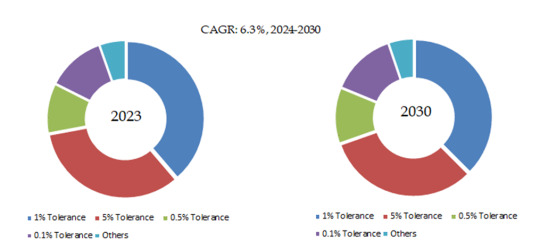
Based on or includes research from QYResearch: Global SMD Thick Film Resistor Market Report 2023-2030.
In terms of product type, 1% Tolerance is the largest segment, hold a share of 38.7%,
Figure. SMD Thick Film Resistor, Global Market Size, Split by Application Segment
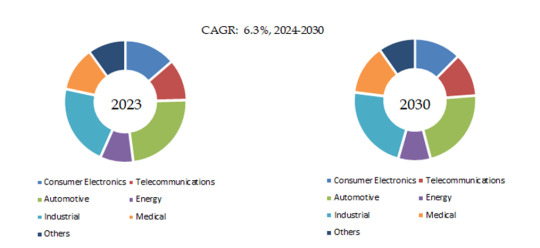
Based on or includes research from QYResearch: Global SMD Thick Film Resistor Market Report 2023-2030.
In terms of product application, Automotive is the largest application, hold a share of 23.4%,
Figure. SMD Thick Film Resistor, Global Market Size, Split by Region
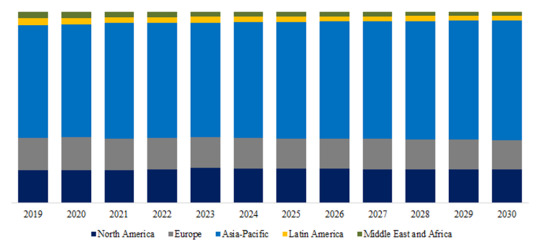
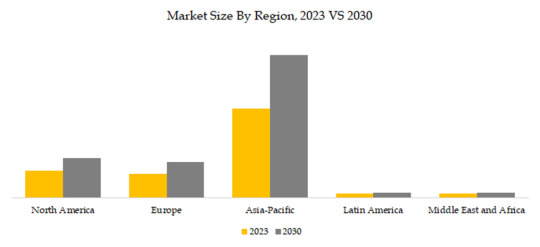
Based on or includes research from QYResearch: Global SMD Thick Film Resistor Market Report 2023-2030.
Market Drivers: D1: Consumer Electronics Boom: The continuous growth in consumer electronics, including smart devices, home appliances, and entertainment systems, has contributed to the demand for SMD Thick Film Resistors in various applications. D2: There is a stable demand for SMD thick film resistors in the automotive, industrial, medical, Telecommunication, energy and other fields of various countries. D3: Growth in Demand in Emerging Economies such as China, India, Southeast Asia, Brazil etc. Restraint: R1: Price Volatility: Fluctuations in raw material prices used in SMD Thick Film Resistors, can affect production costs and subsequently impact pricing strategies. R2: The design and R&D of SMD Thick Film Resistors require high-tech talents, and enterprises are facing the risk of brain drain. R3: Global Economic Conditions: Economic downturns or uncertain market conditions can lead to reduced consumer spending on electronic devices, impacting the demand for SMD Thick Film Resistors. Challenges: C1: Miniaturization Demands: As technology advances, there's a constant need for smaller and more compact electronic devices. This requires SMD Thick Film Resistors to be even smaller while maintaining or improving performance, posing a challenge in manufacturing and precision. C2: Cost Pressure: The market often experiences price pressure due to competitive forces and cost-cutting demands from manufacturers. Balancing quality and cost-effectiveness become crucial to sustain profitability. C3: Technological Advancements: Rapid advancements in technology lead to newer materials, manufacturing processes, and innovative designs. Keeping up with these advancements requires substantial investments in research and development to stay competitive.
About the Authors
Wei Qin Lead Author Semiconductor and Electronics Email: [email protected]
About QYResearch QYResearch founded in California, USA in 2007. It is a leading global market research and consulting company. With over 16 years’ experience and professional research team in various cities over the world QY Research focuses on management consulting, database and seminar services, IPO consulting, industry chain research and customized research to help our clients in providing non-linear revenue model and make them successful. We are globally recognized for our expansive portfolio of services, good corporate citizenship, and our strong commitment to sustainability. Up to now, we have cooperated with more than 60,000 clients across five continents. Let’s work closely with you and build a bold and better future. QYResearch is a world-renowned large-scale consulting company. The industry covers various high-tech industry chain market segments, spanning the semiconductor industry chain (semiconductor equipment and parts, semiconductor materials, ICs, Foundry, packaging and testing, discrete devices, sensors, optoelectronic devices), photovoltaic industry chain (equipment, cells, modules, auxiliary material brackets, inverters, power station terminals), new energy automobile industry chain (batteries and materials, auto parts, batteries, motors, electronic control, automotive semiconductors, etc.), communication industry chain (communication system equipment, terminal equipment, electronic components, RF front-end, optical modules, 4G/5G/6G, broadband, IoT, digital economy, AI), advanced materials industry Chain (metal materials, polymer materials, ceramic materials, nano materials, etc.), machinery manufacturing industry chain (CNC machine tools, construction machinery, electrical machinery, 3C automation, industrial robots, lasers, industrial control, drones), food, beverages and pharmaceuticals, medical equipment, agriculture, etc.
0 notes
Text
Thick Film Devices Market - Forecast (2022 - 2027)
Thick Film Devices Market Size is forecast to reach $123.0 billion by 2026, growing at a CAGR of 8.9% during 2021-2026. Thick film technology is used to produce electronic devices such as surface mount devices, hybrid integrated circuits, heating elements, integrated passive devices and sensors. The growing production of automobiles and escalation in the demand for micro electromechanical systems and multi-layer ceramic capacitors is driving the growth of the thick film devices market. Additionally, Thick Film Devices have been observing several advancements in technology over the past few years. In 2020, researchers from the Fraunhofer Institute for Ceramic Technologies and Systems IKTS, in collaboration with MOZAIK, a UK-based company, have developed conductors based on screen-printing technology with a resolution of 20 micrometers or less for industrial applications (especially 5G) and mass production, owing to which its Thick Film Devices industry is gaining traction in the forecast period 2021-2026.

Report Coverage
The report: “Thick Film Devices Market Report– Forecast (2021-2026)”, by IndustryARC covers an in-depth analysis of the following segments of the Thick Film Devices market.
By Type: Capacitors, Resistors, Photovoltaic cells, Heaters, Others.
By End User: Automotive, Healthcare, Consumer Electronics, Infrastructure, Others.
By Geography: North America (U.S, Canada, Mexico), South America(Brazil, Argentina and others), Europe(Germany, UK, France, Italy, Spain, Russia and Others), APAC(China, Japan India, SK, Aus and Others), and RoW (Middle East and Africa).
Key Takeaways
Asia-Pacific is one of the most significant regions for the thick film devices market, mainly due to government policies favoring the growth of semiconductor manufacturing. Also, the region is the largest producer of consumer electronics.
The global semiconductor supply chain has been suffering severe capacity constraints since 2020 due to pent-up demand in different sectors. To meet increased demand during the current global chip shortage, the semiconductor industry is substantially increasing its fab capacity utilization. This will positively affect Thick Film Market growth.
Automotive sector is expected to witness a highest CAGR of 10.9% the forecast period, owing to various factors such as increase in sales of electric vehicles due to rising concerns over greenhouse gases emissions, and favourable government policies in countries such as India, China and so on.
Thick Film Devices companies are strengthening their position through mergers & acquisitions and continuously investing in research and development (R&D) activities to come up with solutions to cater to the changing requirements of customers.
Request Sample
Thick Film Devices Market Segment Analysis - By Type
Resistors segment held significant market share of 24.5% in 2020, owing to the rising demand for these resistors in automotive industry, consumer electronics goods, and telecommunications products. In addition, rising IC and electric vehicles sales along with the government regulations to enhance fuel efficiency and safety standards are enhancing OEMs to install more electrical and electronic devices, which ultimately drives market for these hybrid integrated circuits in the automotive industry. Moreover, robust technological advancements in electronic goods and the increasing adoption of 4G/5G networks across the globe have also spurred the demand for products with thick film power resistors. Further many OEMs are launching these resistors for several applications. In 2020, Vishay Intertechnology has introduced a line of high-power thick film resistors that meet the AEC-Q200 automotive qualification. Hence these factors are analysed to drive the Thick Film Devices Market in the forecast period 2021-2026.
Thick Film Devices Market Segment Analysis - By End User
Automotive sector is expected to witness a highest CAGR of 9.8% the forecast period. Thick film devices have been widely used in the automotive for their high reliability, excellent thermal, mechanical, and dimensional stability. Thick film integrated passive devices have gained importance in recent years and are widely used in engine control units, antilock brake systems, airbag control modules, LEDs, entertainment & navigation systems, pressure control modules, and transmission system modules. In addition thick film devices have proven to be cost-effective and can sustain very harsh environments and are used in various automotive applications such as motorcycles and car engines. Further the growing production of automobiles is a significant factor in driving market growth due to the high adoption of electrical and electronic devices in automotive manufacturing. In the United States, all heavy trucks must be installed with electronic logging devices (ELD) from the US Department of Transportation’s Federal Motor Carrier Safety Administration (FMCSA). These government regulations would increase the demand for integrated passive devices, and hence, may expand the studied market vendor’s growth scope further. Moreover Canada-based thick film heating element manufacturer, Datec Coating Corporation, was awarded a $1.3 million contract by the Innovation, Science and Economic Development Canada (ISED), a government organization that works toward improving investment scenario for several industries in Canada, for Automotive Supplier Innovation Program. Hence these factors are analyzed to drive the Thick film Market Size in the forecast period 2021-2026.
Inquiry Before Buying
Thick Film Devices Market Segment Analysis - By Geography
APAC region is dominating Thick Film Devices Market growth. This region held significant market share of 40.5% in 2020. Asia-Pacific is one of the most significant regions for the thick film devices market, mainly due to government policies favoring the growth of semiconductor manufacturing. Also, the region is the largest producer of consumer electronics. In 2020, the Chinese government raised around $23-30 billion to pay for the second phase of its National IC Investment Fund. Moreover, the growth of the food processing industry in China and India is further expected to fuel the demand for the thick film devices market. The expansion of the semiconductor industry throughout the region and the rising adoption of MEMS among various industries are bolstering the demand for these integrated passive devices in the region. For instance, the consumption of semiconductors is rapidly increasing in China, compared to other countries, owing to the continuing transfer of global, diverse electronic equipment to China, wherein the product is a necessary component. China is home to three of the top five largest smartphone companies worldwide, posing tremendous opportunities for the thick film device market. According to India Electronics and Semiconductor Association, the semiconductor component market in the country is expected to be worth USD 32.35 billion by 2025. The report states that the country is a lucrative destination for global R&D centers. Thus, the government's ongoing Make in India initiative is expected to result in investments in the semiconductor industry in the country, further providing ample opportunities for the Thick Film Devices market.
Thick Film Devices Market Drivers
Rise in demand for Electric Vehicles
The electric car market has witnessed rapid evolution with the ongoing developments in automotive sector and favorable government policies and support in terms of subsidies and grants, tax rebates. Major manufacturers such as General Motors, Toyota, and BMW plan to release a potential of 400 models and estimated global sales of 25 million by 2025. In 2021, Ford Motor has committed to increase its investments in electric vehicles to $30 billion by 2025, up from a previous spend of $22 billion by 2023. Similarly, in 2020, Volkswagen, Chinese ventures has committed to invest $17.5 billion in electric vehicles by 2025. As Thick Film devices and other integrated passive devices are used for battery heat management for electric vehicles, cabin and comfortable heating, heaters for vehicle sensors and also in advanced driver assistance. Hence these investments are analyzed to drive the Thick Film Device industry in the forecast period 2021-2026.
Schedule a Call
Capacity Expansion by Semiconductor Manufacturers
The global semiconductor supply chain has been suffering severe capacity constraints since 2020 due to pent-up demand in different sectors. To meet increased demand during the current global chip shortage, the semiconductor industry is substantially increasing its fab capacity utilization. In 2021, Taiwan Semiconductor Manufacturing Co's (TSMC), board has approved $2.89 billion in spending to increase capacity. Similarly in 2021, United Microelectronics Corporation (UMC), is also increasing its capacity to produce mature expertise chips in alternate for monetary ensures, in response to the shortage gripping the worldwide semiconductor provide chain. In addition, Tower Semiconductor is investing $150mn in 2021 and the first quarter of 2022 to expand manufacturing at its facilities in Israel, the US and Japan for the production of 200mm wafers. As Thick film Devices are used in Wafer processing, hence these capacity expansion are analysed to drive the Thick Film industry outlook in the forecast period 2021-2026.
Thick Film Devices Market Challenges
Decrease in Sales of Desktop PC
As per latest industry trends publications, the sales of Consumer PC have witnessed worst slumps in volume sales globally. Several Countries such as U.S, China, Germany, UK, and others have experienced the worst decline in volume sales of Desktop PCs. According to Mint, Worldwide PC shipments totaled 51.6 million units in the first quarter of 2020, a 12.3% decline from the first quarter of 2019, after three consecutive quarters of growth, the worldwide PC market experienced its sharpest decline since 2013 due to the COVID-19 outbreak. These kind of declining trend will negatively affect the growth of the Thick Film Devices as it widely used in desktops. The decline in the volume shipments of personal computers due to the growing adoption of convertible laptops, smartphones and tablets in the enterprises, coupled with the adoption of policies such as Bring-Your-Own-Device (BYOD) is also set to negatively impact the adoption of desktop PCs in the small, medium as well as large enterprises. This is low demand of the products is set to negatively impact the procurement of Thick Film Devices during the forecast period 2021-2026.
Buy Now
Thick Film Devices Market Landscape
Product launches, acquisitions, Partnerships and R&D activities are key strategies adopted by players in the Thick Film Devices market. Thick Film Devices top 10 companies include Panasonic Corporation, Samsung Electronics Co. Ltd, Vishay Intertechnology Inc., Rohm Semiconductor GmbH, TE Connectivity Ltd, KOA Speer Electronics Inc., AVX Corporation, Aragonesa de Componentes Pasivos SA, Wurth Electronics Inc., FDK Corporation among others.
For more Electronics related reports, please click here
#Thick Film Devices Market#Thick Film Devices Market share#Thick Film Devices Market price#Thick Film Devices Market trends#Thick Film Devices Market analysis#Thick Film Devices Market report
0 notes
Text
Justice League Indispensable: JLA #222: Beasts II: Death Games

January, 1984
I’ve noticed over two-hundred and twenty plus posts that villains love being tall and dangling heroes from their fingers.
That tactile sensation... It must feel amazing. And a little squirmy.
Not much else to say about the cover. Except that Hawkman’s legs seem to not exist.
Anyway.
Last time on Justice League: the Justice League have been dealing with a lot of weird animal/people hybrids. Has Dr. Moreau finally been adapted into DC? Probably not. But Flash, Elongated Man, and Hawkman all get badly injured in separate locations by these Ani-Men. And Firestorm catches a catgirl named Reena robbing the Empire State Building. She asks him for sanctuary so he takes her to the JL Satellite to spill the beans on the Ani-Men.
This time: Superman is in the hilarious position of interrogating catgirl Reena who has forgotten how chairs work.


Just sitting on the table. Probably getting hair everywhere.
Firestorm tells Superman to chill out with the hardnosed animated Justice League approach (I mean, he doesn’t, but animated Superman also needed to chill out, amirite?) because Reena volunteered to help.
Reena says she has no choice but to trust the League and that she’s lived in DAILY TERROR for the past few months.
She asks if any of them have heard of Repli-Tech?
Dang, shame Batman is off having recently formed the Outsiders because I bet he knows all the companies. All of them.
Ooooorrrr Aquaman does?
Aquaman: “Repli-Tech Industries... They were one of the first of the genetics companies to go public on the stock exchange, weren’t they? I remember they made quite a splash a year ago... But I haven’t heard anything about them since.”
Oh, Aquaman, you punster, you.
So Reena lays down some exposition about how Repli-Tech was a hilariously mismanaged company, where the executives forced a rapid capital expansion beyond its market niche and how a recession just bankrupt the overextended company.
But despite the dismay and panic of the other execs, hilariously mustached CEO Rex Rogan had a daring plan to save the company!
Rex Rogan: “Dr. Lovecraft and his genetic discoveries were the basis for our initial success, developing new forms of medicine -- new fertilizers -- even new fuels! He’s come up with a way out for all of us, involving a new, experimental form of DNA manipulation. It could kill us -- but the alternative is disgrace, financial ruin, and imprisonment.”
Oh, sure. Of course. Why not trust a guy called DR. LOVECRAFT.
But due to faith in Rex Rogan, CEO, or just fear of prison, the whole board all agrees to this wild plan.
And the wild plan?
Dr. Lovecraft uses SCIENCE to put them all in cocoons where they are transformed into furries.


Rex Rogan Maximus Rex: “We are reborn -- we are above the beasts, and above mankind! We will do more than merely survive -- we will conquer -- we will rule!”
Then with company guards also enhanced by Dr. Lovecraft, Rex has them steal a whole bunch of shit which is used to protect Repli-Tech from bankruptcy.
Huh.
Uh. I don’t really get how becoming furries was an essential part of this plan.
If the plan was just to steal a bunch of shit to make up for poor financial management. But live your best lives, Repli-Tech board of directors.
Anyway, having super hunky animal powers is handy when the superheroes inevitably become involved which oops look its happening. It happened last issue and this issue so good thing they had turned themselves into furries.
(Do the Repli-Tech board of directors not have to make any public appearances? They’re a publicly traded company, apparently.)
Also, Maximus Rex buys a warehouse to turn into an arena for some death games where humans fight beast-men for the amusement of the rich and powerful like politicians and corporate executives.
Not really sure how this specifically saves the company but I think that’s more of a personal project for Maximus Rex, lion hunk.
The blood sport did make Reena start thinking that maybe Rex was the asshole.
‘Uh no shit’ chimes in Hawkgirl and Wonder Woman who determine now is a good time to interject that Reena is just as much of a monster for sitting idly by as people were killed in blood sport.
Firestorm, Superman, and Zatanna counter ‘hey lets hear the rest of the story, mkay?’
Reena grew unable to stomach all the death and as luck would have it Rowl, one of the Repli-Tech guards recently transformed into an animal hunk also found the whole situation gross.
He helped Reena escape but wound up captured himself.
He did manage to high kick a scorpion man though. So that’s something.

Anyway, Rowl getting caught is why Reena was breaking into the Repli-Tech office in the Empire State Building. She wanted to find evidence!
Hawkgirl: “I don’t believe it. Not a word. She’s obviously a plant -- she said herself, she was Rogan’s mistress, that she always did everything he told her. Why should we believe she’d turn against him?”
Firestorm: “Look at her, Hawkgirl -- me, I believe her.”
Aquaman: “We can’t ignore what she’s told us, Shayera.”
Even Superman goes yeah lets believe the catgirl. And I’m sorta wondering about all the male Justice League members believing the catgirl while two out of three of the woman leaguers are like uhn uh I don’t trust that darn cat.
But we shortly see that Reena was telling the truth about Rowl, if nothing else.
Guards at the Arena snooze gas Rowl to drag him from his cell into the Arena.
A Guard: “Y’know, I used to be friends with this guy, when he was still human. Rex gives him a chance to be something special, and he goes and blows it helping some damn cat.”
Rowl comes to in the center of the Arena with the crowd roaring for his blood.
He tries to talk to the crowd, win their sympathy by saying he used to be human like them but they’re rich dicks who want to see someone horribly murdered for their amusement.
Trying to talk to them was a non-starter. And Maximus Rex even mocks him for trying.
Maximus Rex: “Human you may have been -- but you were never like them. Smell the air: it’s so thick you can taste it -- the oily sweat of a blood-hungry mob! They want a death, Rowl... They want your death!”
Maximus Rex asks the crowd what Rowl deserves and they chant DEATH and KILL HIM so Maximus Rex jumps down to the Arena floor to see to it personally.
He’s kinda like Roman Emperor Commodus from the historically adjacent movie film Gladiator who liked to gladiate instead of just watching Gladiator gladiate.
And unlike movie Commodus, Maximus Rex is no slouch.

Right off the bat, he blocks Rowl’s ultimate technique, a jump kick.
Poor Rowl is doomed.
And he doesn’t even know it yet. He manages to hit Maximus Rex once and thinks he’s winning.
Rowl: “You’re just as you were in the boardroom -- you’ve no stomach for a real battle! We used to laugh about you, Rogan, down in the ranks! All of us -- we called you a gutless wonder!”
Maximus Rex retorts by disembowling Rowl.
Maximus Rex: “So, Rowl... Which of us has no stomach now?”
Savage af.
Then he knocks Rowl down and RIPS OFF HIS HEAD TO SHOW TO THE CROWD??
Geez! This is a gory story! I mean, we don’t see anything really except for some dark blue blood but geez!
A lion man just ripped off a jump-kicking wolfman’s head in a gladiatorial arena for the ultra rich!

You’re bonkers, superhero comic books!
RIP Rowl, Justice League #222 (1984) - Justice League #222 (1984).
Back at the Justicey part of the plot, 22,300 miles above the Earth, the League receives an emergency message from Dr. Hamid of Cairo Hospital.
Or he says he’s Dr. Hamid of Cairo Hospital.
He looks like Tony Stark, that Ironman guy from Marvel.

Anyway, he got the JL’s top secret broadcast code from a device on Hawkman’s uniform.
Yeah. Hawkman. Remember how he was attacked by a giant scorpion last issue? Well, he’s in the hospital with an acute case of too much scorpion venom in him. And Dr. Toby Stark fears he may not last the night.
Hawkgirl is understandably upset and wants to rush to his side as fast as possible. And since the League has cool teleport booths, that’s... still not that fast because the booths only go to other booths and Cairo Hospital doesn’t have a booth.
She also asks Wonder Woman to go with her.
Superman wonders if Hawkgirl is maybe too emotionally torn up to go see her scorpion’d hawkguy.
Zatanna: “I won’t stop her, Superman. Will you?”

WHILE GIVING AN EXPRESSION THATS LIKE ‘please do not drag me into drama.’
Reena tries to commiserate with Hawkgirl but Shayera is having none of that.
Hawkgirl: “Your people did this. If Katar dies -- you killed him!”
Oof.
Zatanna tries to contextualize Hawkgirl’s outburst by explaining that Hawkman and Hawkgirl are just super close but Reena says she understands because she and Rex were that close.
And that despite everything she still loves him and it makes her feel like shit.
Oof.
Wonder Woman and Hawkgirl arrive at Cairo Hospital and Dr. Hamid tells them that Hawkman isn’t the only one who got scorpion’d.
Dr. Hall and his students were attacked by giant scorpion man to rob some archaeological relics they found. Several of the students are in the hospital after being stung and two have already died.
As for Dr. Hall, why he’s just plum gone missing. (Because he’s Hawkman)
From his hospital bed, Hawkman weakly (because of getting scorpion’d) apologizes for the argument they had before he left for Cairo and Hawkgirl claims she doesn’t even remember the fight. Because nothing makes you put aside hurt feelings like possible death by scorpion.
Dr. Hamid tells Wonder Woman that Hawkman is very likely to die unless they can get some giant scorpion man venom to develop into an anti-toxin.
And while they walk by, a random janitor mopping the floor reports the presence of the Justice League members to his ring.
HMMM.
I think that I suspect that this humble janitor is in fact actually a plant for the Rex Squad.

Yup.
Yuuuup.
That janitor was up to no good.
With two Hawks down with sleep gas, its left to the Rex Squad unit leader to handle Wonder Woman.

ITS A HECKIN RHINO MAN!
Of course, a hero as strong as Wonder Woman isn’t going down to a single rhino punch.
It takes a second whole punch to knock her out.
Womp womp.
Rhino Man: “Gas her and shove her in the ‘copter with the others, Mac. The boss wants ‘em all for a little TV show he’s planning. Way I hear, it’s gonna be a ratings smash!”
Rhino puns.
About an hour later, the Justice League subteam nicknamed Sit On Their Thumbs is still in the satellite wondering why Wonder Woman hasn’t called to tell them how Hawkman is doing.
But gosh darn it, if they don’t hear from her in two more minutes in time for the regular hourly check-in, then they’ll just have to do something maybe!
But they get a signal from Hawkgirl’s code and Aquaman main screen turns on... to reveal a big sneering lion man who is not Hawkgirl at all.
Reena: “oh god... he’s found me.”
Maximus Rex, full incoming ham: “Yes, Reena, I’ve found you. When this is done, you’ll suffer the fate of all who betray me. But first, tell your new friends who they face! I am MAXIMUS REX, LEADER OF THE NEW ORDER!”
Firestorm: “Y’know... Somehow, I’d already guessed that.”
Snrrk.
But Maximus Rex warns them not to mock his lionness and has the camera swung over to reveal that he has Wonder Woman and the Hawks as his hostages.
Hawkman is definitely going to die (from being scorpion’d) but Maximus Rex is Magnanimous Rex and instead of immediately killing them, he’s going to turn them into furries too.
Maximus Rex: “I think the Amazon would make a very proper pig, don’t you?”
Man, this guy must have loved the “This Little Piggy” episode of Justice League Unlimited.
Buuuut he won’t turn them into furries and make them fight in his Arena if the Justice League do him some small favors.

First thing, turn Reena over to him.
Second thing, “I want your full cooperation with my plans.”
When Superman tells him ‘obviously no’ Maximus gets mad.
Oh, Maximus the Mad. That’s a catchy name for him.
Maximus Rex: “In the hours to come, you will regret this decision, Justice Leaguers. My new order is the future. You cannot turn the tide of destiny. It will sweep over you... Draw you under... Drown you in the sea of history! Ours will be a struggle to the death -- your death! HA HA HA HA”
He is.
Frothing a little.
And as the mad lion lad continues just belly laughing on this collect call, Superman shakes his fist determinedly.

Superman: “Enjoy it while you have it, Maximus. We’re bringing you down.”
I mean, sure, half of the League is captured or in the hospital already from tangling with these Ani-Men but the League is probably due for an upswing, right?
Or maybe they’ll all get captured and I’ll get to see what the Justice League’s fursonas are.
My guess for Superman is the noble capybara, friend to all.
Follow @justice-league-indispensible or @essential-avengers which is my real liveblog. I’m sorry, this has all been a lie. A jape. A delightful jest. An April Fool. Like and reblog maybe. The more notes this gets the more I go oh no look at what kind of response Justice League gets and I’ve backed the Avengers horse, the April Fool turns out to be me! That’ll show me.
#Justice League of America#Justice League Indispensable#Superman#Wonder Woman#Aquaman#Hawkman#Hawkgirl#Firestorm#Zatanna#Reena the catgirl#Maximus Rex and the Ani Men#indispensable dc liveblogging
13 notes
·
View notes